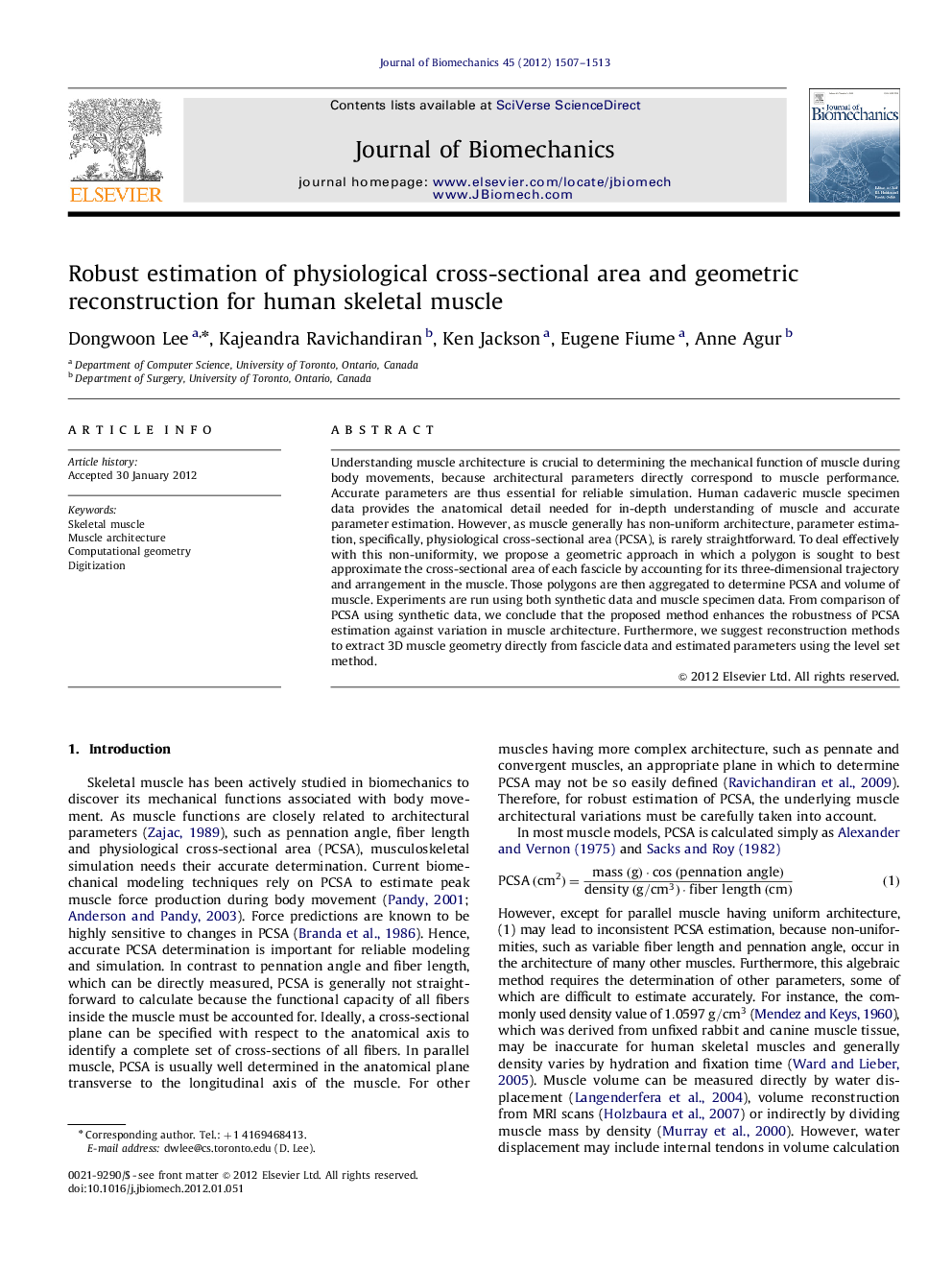| Article ID | Journal | Published Year | Pages | File Type |
|---|---|---|---|---|
| 872295 | Journal of Biomechanics | 2012 | 7 Pages |
Understanding muscle architecture is crucial to determining the mechanical function of muscle during body movements, because architectural parameters directly correspond to muscle performance. Accurate parameters are thus essential for reliable simulation. Human cadaveric muscle specimen data provides the anatomical detail needed for in-depth understanding of muscle and accurate parameter estimation. However, as muscle generally has non-uniform architecture, parameter estimation, specifically, physiological cross-sectional area (PCSA), is rarely straightforward. To deal effectively with this non-uniformity, we propose a geometric approach in which a polygon is sought to best approximate the cross-sectional area of each fascicle by accounting for its three-dimensional trajectory and arrangement in the muscle. Those polygons are then aggregated to determine PCSA and volume of muscle. Experiments are run using both synthetic data and muscle specimen data. From comparison of PCSA using synthetic data, we conclude that the proposed method enhances the robustness of PCSA estimation against variation in muscle architecture. Furthermore, we suggest reconstruction methods to extract 3D muscle geometry directly from fascicle data and estimated parameters using the level set method.
